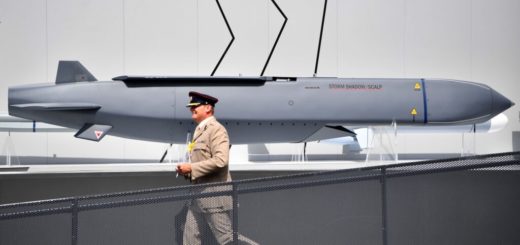DARPA Invests $4 Million in BAE Systems for Advanced AI Air Combat Solutions

{loadposition bannertop}
{loadposition sidebarpub}
On September 10, 2024, the Defense Advanced Research Projects Agency (DARPA) awarded a $4 million contract to BAE Systems’ FAST Labs™ research and development organization for Phase 1 of the Artificial Intelligence Reinforcements (AIR) program.Follow Army Recognition on Google News at this link
DARPA AI Reinforcements Program (Picture source: Lockheed Martin)
The AIR program aims to overcome the challenges of air combat, a fast-paced and uncertain environment that complicates the integration of autonomous agents. The goal is to develop dominant tactical autonomy for beyond visual range air combat missions. Autonomy solutions will be developed and tested on F-16 test platforms.
“Producing reliable and consistent air combat performance requires a significant amount of data and rapid, robust testing cycles,” said Michael Planer, scientist and principal investigator at BAE Systems’ FAST Labs. “By using machine learning, we will train models to make dynamic decisions, ensuring that the artificial intelligence pilot is tested and approved by human pilots.”
Under the AIR contract, BAE Systems will use machine learning techniques to innovate simulation models of existing sensors, electronic warfare systems, and weapons within dynamic and operationally representative environments. These techniques will also capture the underlying physics of aerial maneuvers and systems. The company will establish the processes needed to rapidly design, test, and deliver future iterations of AIR program software products.
The AIR (Artificial Intelligence Reinforcements) program is designed to bring significant advances in the aviation field by developing tactical autonomy capabilities for combat missions beyond visual range. By integrating artificial intelligence and machine learning, the program aims to create autonomous systems capable of making dynamic real-time decisions in fast-paced and uncertain combat environments. This will enhance the reliability and consistency of aerial combat performance, increasing operational efficiency while reducing the cognitive load on human pilots. By accurately modeling sensors, electronic warfare systems, and weapons, and capturing the physics of aerial maneuvers, the AIR program seeks to strengthen air superiority through advanced autonomy.
The AIR program could enable the development of autonomous combat drones capable of conducting missions without direct human intervention. With advanced artificial intelligence and machine learning, these drones would be able to analyze sensor data in real time, detect and engage enemy targets beyond visual range. They could make dynamic tactical decisions, such as choosing the best flight trajectories, avoiding threats, and optimizing the use of their weapons, thereby increasing the efficiency of military operations while reducing risks for human pilots.
Another concrete application of the AIR program is the integration of AI-driven assistance systems in human-piloted fighter jets, such as the F-16. These systems could help pilots by providing real-time analyses of the combat space, anticipating enemy movements, and suggesting defensive or offensive maneuvers. They could also manage electronic warfare systems to counter hostile signals and protect the aircraft. This human-machine collaboration would improve decision-making, increase survival rates in combat, and alleviate the cognitive load on pilots during complex missions.

{loadposition bannertop}
{loadposition sidebarpub}
On September 10, 2024, the Defense Advanced Research Projects Agency (DARPA) awarded a $4 million contract to BAE Systems’ FAST Labs™ research and development organization for Phase 1 of the Artificial Intelligence Reinforcements (AIR) program.
DARPA AI Reinforcements Program (Picture source: Lockheed Martin)
The AIR program aims to overcome the challenges of air combat, a fast-paced and uncertain environment that complicates the integration of autonomous agents. The goal is to develop dominant tactical autonomy for beyond visual range air combat missions. Autonomy solutions will be developed and tested on F-16 test platforms.
“Producing reliable and consistent air combat performance requires a significant amount of data and rapid, robust testing cycles,” said Michael Planer, scientist and principal investigator at BAE Systems’ FAST Labs. “By using machine learning, we will train models to make dynamic decisions, ensuring that the artificial intelligence pilot is tested and approved by human pilots.”
Under the AIR contract, BAE Systems will use machine learning techniques to innovate simulation models of existing sensors, electronic warfare systems, and weapons within dynamic and operationally representative environments. These techniques will also capture the underlying physics of aerial maneuvers and systems. The company will establish the processes needed to rapidly design, test, and deliver future iterations of AIR program software products.
The AIR (Artificial Intelligence Reinforcements) program is designed to bring significant advances in the aviation field by developing tactical autonomy capabilities for combat missions beyond visual range. By integrating artificial intelligence and machine learning, the program aims to create autonomous systems capable of making dynamic real-time decisions in fast-paced and uncertain combat environments. This will enhance the reliability and consistency of aerial combat performance, increasing operational efficiency while reducing the cognitive load on human pilots. By accurately modeling sensors, electronic warfare systems, and weapons, and capturing the physics of aerial maneuvers, the AIR program seeks to strengthen air superiority through advanced autonomy.
The AIR program could enable the development of autonomous combat drones capable of conducting missions without direct human intervention. With advanced artificial intelligence and machine learning, these drones would be able to analyze sensor data in real time, detect and engage enemy targets beyond visual range. They could make dynamic tactical decisions, such as choosing the best flight trajectories, avoiding threats, and optimizing the use of their weapons, thereby increasing the efficiency of military operations while reducing risks for human pilots.
Another concrete application of the AIR program is the integration of AI-driven assistance systems in human-piloted fighter jets, such as the F-16. These systems could help pilots by providing real-time analyses of the combat space, anticipating enemy movements, and suggesting defensive or offensive maneuvers. They could also manage electronic warfare systems to counter hostile signals and protect the aircraft. This human-machine collaboration would improve decision-making, increase survival rates in combat, and alleviate the cognitive load on pilots during complex missions.






